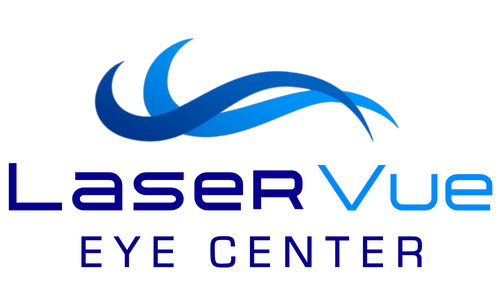Posted by: LaserVue LASIK & Cataract Center in Cataracts

An Inside Look at the Different Types of IOLs Available
Cataract surgery is one of the most common surgeries in the United States. According to the American Academy of Ophthalmology, over 25 million Americans have cataracts- the majority of which will eventually have cataract surgery. While the decision to treat your cataract with surgery may be straightforward, many have questions about which type of intraocular lens (IOL) is best for them.
We’ll take a closer look at the different types of IOLs available and explain the advantages and disadvantages of each.
What is an IOL?
The clouding of your eye’s natural lens is what impairs your vision when you have a cataract. This is why in addition to removing your cataract, your surgeon removes your eye’s natural lens during cataract surgery. Your surgeon then inserts a small artificial lens, called an intraocular lens, to replace the eye’s natural lens.
An IOL is the key to clear vision after cataract surgery. This makes choosing the right IOL one of the most important decisions in having cataract surgery.
Key Things to Think About When Choosing A Type of IOL
IOLs differ in what they can do for your vision. In addition to taking into account your overall eye health and prescription, you may have to make a decision on what kind of visual outcomes you would like to have after surgery.
Is it more important to have great distance vision, but wear reading glasses for objects up close?
Would you rather have great reading vision, but wear glasses for distance?
Or is it important to have good distance vision with some reading vision.
To answer these questions, you should think about your daily activities and evaluate which might benefit you most.
Monofocal IOLs
Monofocal IOLs are the most common type of IOL. These standard lenses allow patients to see clearly but at only one area of focus or distance. A patient can choose to have their vision focused on distance (driving, watching sports), intermediate (mid-range like a computer or dashboard), or near (reading, checking mobile devices). Monofocal IOLs do not correct astigmatism.
Most patients who opt for monofocal IOLs have their eyes set for distance vision and rely on reading glasses to see objects up close.
Multifocal IOLs
A multifocal IOL can correct vision at multiple distances. A multifocal lens can correct distance, intermediate, and near vision, all customized to the patient’s needs for their lifestyle. Multifocal lenses allow for the greatest degree of freedom from glasses after cataract surgery.
However, being a good candidate for multifocal IOLs means being willing to accept some compromise in your distance vision in order to be less dependent on reading glasses. For this reason, patients whose occupations or lifestyle demand outstanding distance vision may not be the best candidate for this type of IOL.
Toric IOLs
Toric IOLs are premium IOLs designed to correct astigmatism and nearsightedness or farsightedness. Toric IOLs are designed so that your surgeon can align the IOL on your eye for precise astigmatism correction.
Toric IOLs are similar to Monofocal IOLs in that they can correct for either nearsightedness or farsightedness, but not both.
Which is Type of IOL Is Right for Me?
Your surgeon is the only person who can work with you to find the right solution. During your comprehensive eye exam and cataract surgery consultation, Dr. Bansal will evaluate your eye health, prescription, needs, and advise you on your options for IOLs. Understanding the differences between the different types of IOLs out there is the first step to empowering yourself to making the best decision for optimal vision.
Call or schedule a free consultation online with LaserVue to learn more about the types of IOL and which is best for your specific cataract surgery.

